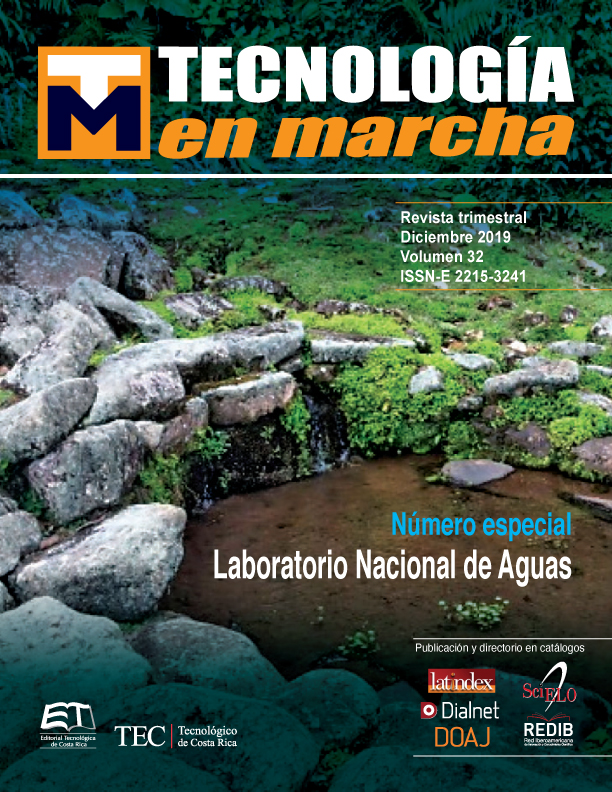Drinking-water in Costa Rica: from millennium development goals to Sustainable Development goals
Main Article Content
Abstract
The present study analyzes the progress made in Costa Rica regarding “Clean water and Sanitation”, since the implementation of the Millennium Development Goals from 1990 to 2015 and the Sustainable Development Goals from 2016 to 2030. The results from the annual reports of drinking-water coverage and quality made by the Laboratorio Nacional de Aguas (1991- 2015), and data from the WHO/UNICEF report “25 Progress on Drinking-water, Sanitation and Hygiene” were used as source of information data for this study. In therms of coverage with water supplied by pipe, the results indicate that Costa Rica (97%) has made more progress than the rest of the world (58%) and Latin America (89%) within the period 1990-2015. Regarding water quality, Costa Rica went from 50% of the population with water of potable quality to 91.2% within the period of 1990-2015. Additionally, in 2017 the coverage of potable drinking-water –free from faecal and chemical pollution- was 93.3 %, stablishing the goals for 2022 and 2030 of 95 % and 99 % respectively. Lastly, this study recommends to carry out the strategy to improve the quality of drinking-water services from 1989 to 2030, in order to universalize the water supply in Costa Rica.
Article Details
Los autores conservan los derechos de autor y ceden a la revista el derecho de la primera publicación y pueda editarlo, reproducirlo, distribuirlo, exhibirlo y comunicarlo en el país y en el extranjero mediante medios impresos y electrónicos. Asimismo, asumen el compromiso sobre cualquier litigio o reclamación relacionada con derechos de propiedad intelectual, exonerando de responsabilidad a la Editorial Tecnológica de Costa Rica. Además, se establece que los autores pueden realizar otros acuerdos contractuales independientes y adicionales para la distribución no exclusiva de la versión del artículo publicado en esta revista (p. ej., incluirlo en un repositorio institucional o publicarlo en un libro) siempre que indiquen claramente que el trabajo se publicó por primera vez en esta revista.

